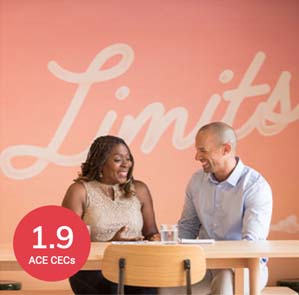
The practice and process of health coaching focuses on two elements: prevention and meaningful lifestyle change, both of which are crucial for reducing the incidence of lifestyle-related diseases such as type 2 diabetes and metabolic syndrome. As the profession evolves and more research is conducted, we understand the following:
- Health coaching improves the management of chronic diseases.
- Health coaching produces positive effects on individuals’ physiological, behavioral and psychological conditions and on their social life.
- Health coaches partner with their clients to implement sustainable lifestyle changes.
All of this means health coaching is a legitimate and evidence-based approach for helping clients modify the lifestyle habits that contribute to disease risk and development. However, not every coaching approach is equally effective. This article examines the qualities of effective coaching and presents seven steps for developing a practice that is both sustainable and effective for both you and your clients.
Qualities of Effective Coaching
As a health coach, you are a unique member of the helping professions, as well as of the health and exercise industry. These professionals employ a client-centered approach to guide individuals toward lasting lifestyle changes that are aligned with their values and needs. In other words, as a health coach, you are not the expert on your clients. Rather, you strive to honor the belief that clients are the experts on themselves, and each person has the potential to ignite their own change with intentional guidance and gentle encouragement. Health coaches are differentiated from other coaching roles because your primary focus is on enhancing the health and well-being of all clients, and the process results in a client-directed plan of action.
When it comes to quality coaching, there are a set of characteristics or elements that relate to internal effective coaching—or the process we use. These elements include:
- Creating a client-centered partnership or collaboration
- Offering unconditional positive regard and empathy
- Respecting your client’s autonomy
- Meeting a client where they are
- Encouraging empowerment
- Providing support
- Using a team approach to develop a client’s wellness
- Developing thoughtful strategies
- Having conversations that are rooted in the core values of motivational interviewing
Again, these are all part of the process of coaching, the internal professionalism, but how do you transform your internal professionalism into external growth? And how do you elevate your practice for long-term success?
Looking Toward Your Future
As with any profession or practice, introspection is a key component of evaluating where you are and identifying where you want to be. Before we dive into a detailed, seven-step plan for elevating your practice, spend some time reflecting on the following questions. They are designed to accomplish three specific goals. The first two questions will help you identify barriers you are encountering, while the next three help you narrow down your expertise. The final three provide an avenue for you to explore your target market.
Barriers
- What is the one thing you struggle with the most?
- What is one action you can take that will elevate your practice by 1% over the course of the next _____ months?
Expertise
- If you had a window of 30 minutes, what is one topic you could confidently discuss or speak about? What’s your “thing”?
- If you had a second window of 30 minutes, what is a second topic you could talk about?
- Can you identify two to three more topics?
Target Market
- Who do you want to work with? For example, what is your ideal client’s gender, age group (keep it to a range of about 10 to 15 years) and living situation? Do they take care of kids or aging family members? Are they divorced or married? What are their hobbies, likes and dislikes or favorite hangout spots?
- What are your ideal client’s needs and general goals for health and wellness? What are their pain points? Keep in mind that these should connect with the personal areas of expertise you identified above.
- What problem or concern are you hoping to solve for these clients?
Much like your work with clients, elevating your coaching practice is not possible until you know what the barrier is and what you want to accomplish. This is often the most challenging step forward for new professionals, so it is well worth investing the time to answer these questions. Once you have a rough idea, perform your own SWOT analysis to map out what you are good at (strengths), what you can work on (weaknesses), what elements you can use to your advantage to build your presence and practice (opportunities), and what (or who) potentially stands in your way or causes additional challenges (threats).
A 7-Step Plan to Elevate Your Career
After you have answered the questions listed above and performed a basic SWOT analysis, you are ready to craft a plan to ELEVATE your career. Each step of the ELEVATE process—evolve, learn, engage, vision, aspire, time and energy—is outlined below.

Step 1: Evolve
Evolving involves developing gradually or slowly changing into a better or more advanced state. To elevate the client experience and our practice, you must commit to evolving, not just as the field changes, but as you grow in your expertise and experience. As your clients progress and evolve, you must do the same.
The Evolve Focus:
Here, draw from your SWOT analysis and decide what skills you need or want to improve upon or build. Examine your coaching process and determine what needs additional practice or critiquing. This is also a good time to identify any additional credentials or continuing education you may want to seek to support your growth.

Step 2: Learn
You are constantly learning, usually through experience and continued education. But what about mentorship? Every coach needs a coach.
The Learn Focus: Seek out other professionals who offer skills and guidance you can learn from to build your brand and experience in the field. Keep in mind, the point is not to “copy and paste” or to eclipse your own style and flare. The purpose is to learn from others, just as your clients learn from you.

Step 3: Engage
Don't just be in the profession—get involved. You have an enormous opportunity to truly engage with the dynamics of the field by actively seeking those opportunities.
The Engage Focus: Search for interest groups, professional organizations and collaborative opportunities with other professionals, and consider taking an active role as a professional in this field.

Step 4: Vision
This step is critical to ensuring alignment between your practice and values. What you seek is seeking you. What do you want to change, build or rebuild? Consider creating a vision board to help clarify your plans.
The Vision Focus: Check in regularly with your original mission and vision statements. Determine if your current practices and habits are in line with the vision you originally created for your business.

Step 5: Aspire
Just as your clients set goals, you need to do the same in your practice. What do you aspire to accomplish, complete or create?
The Aspire Focus: Outline five- and 10-year plans and consider what the strategy is behind your practice and what gaps the industry has that you can potentially fill.

Step 6: Time
As a business owner, you work both in the business (time with clients, sessions, etc.) and on the business (this is the back-end process and upskilling, self-promotion, and planning for additional revenue streams). Don’t fall into the trap of only attending to the immediate requirements of your business and ignoring the planning and background work that is essential for growth—make time for both!
The Time Focus: Balance your time and carve out periods during the week to work on your business outside of sessions with clients. This might include updating your business plan, marketing, budgeting, administrative efforts, billing, networking, brainstorming new ideas, completing continuing education courses, etc.

Step 7: Energy
Your colleagues and clients can sense your energy, so be sure to bring good energy to every interaction, whether it’s in person or over Zoom. Be present in the moment with everyone you engage with and continue to uphold the spirit of motivational interviewing by offering unconditional positive regard, kindness and collaboration.
The Energy Focus: Set a daily or weekly intention. At the conclusion of the day or week, check in and record any observations about the energy you had during the day/week.
Opportunities to Pursue
While working on your seven-step elevation plan, be sure to consider the following types of opportunities and invest in the areas you may have previously overlooked:
- Create a business plan (and invest in developing business know-how). The U.S. Small Business Administration offers extensive resources to help you develop a plan for success.
- Align your mission, vision and values with your areas of expertise.
- Research your target demographics’ needs and characteristics.
- There is a growing range of technologies available that can benefit both you and your clients. Take the time to learn more about what is on the horizon and ask how you can leverage the available tools to support and elevate your business, practice and client experience.
- Avoid “Frankenstein-ing” your business. This is an outcome or side effect of neglecting intentional business planning and design before building and launching your practice.
Building a business, nurturing a sustainable and effective practice, and elevating both your practice and your clients’ experience is not a swift process. Rather, it’s much like behavior change in that it is both complex and nonlinear. There will be setbacks, slip-ups and celebration milestones. Take time to develop and invest in yourself and your strategy and you will see the return on that investment multiply.
Expand Your Knowledge
 |
Designed for health coaches, exercise professionals and healthcare professionals, this interactive course provides the core coaching competencies and communication techniques you need to practice and refine your behavior change coaching skills for the most effective results.
|
 |
For experienced health coaches, exercise professionals, and healthcare professionals ready to level up, this interactive course builds the advanced coaching skills you need to create an effective behavior change environment that aligns with your client’s values and vision, and helps them overcome obstacles and negative thought patterns.
|
 |
In this video training, you will learn how to run group coaching sessions and develop the skills you need to empower client motivation while building healthy habits within a community experience. Adding this unique skill set of group coaching to your current practice will help your clients navigate change and add a new dimension of growth to your business.
|





 by
by 













